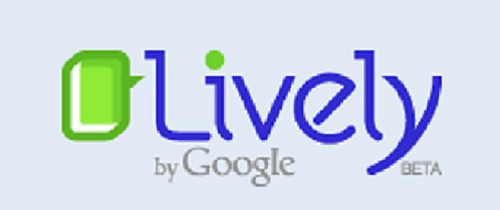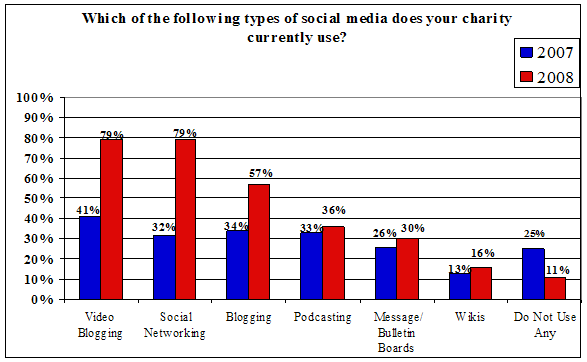 By now, most companies have got a pretty good handle on what happens on their website. At the very least, they use a tool like Google Analytics or the simple and easy StatCounter to track total visits, referring URLs, visitor paths and time-spent-on-site. It’s intriguing and fun to see where people are coming from and what they’re doing. It’s also increasingly irrelevant.
By now, most companies have got a pretty good handle on what happens on their website. At the very least, they use a tool like Google Analytics or the simple and easy StatCounter to track total visits, referring URLs, visitor paths and time-spent-on-site. It’s intriguing and fun to see where people are coming from and what they’re doing. It’s also increasingly irrelevant.
The website as we know it is becoming a relic of the first 15 years of the Internet. Sure, websites will always be important, but the action that takes place around a company, brand or individual is moving into a complex web of stateless conversations. Some of these take place on corporate websites, but many of them don’t. Consider Facebook, whose 200 million members are the world’s largest ready-made audience. Some brands have more active communities of customers on Facebook than they do on their own websites. In fact, their own websites may not even enable community at all. Perception of their brand is defined in a community that they host but can’t control.
Locationless
Our personal activities now take place in many locations. Look at Twitter, for example. While there’s a Twitter website, conversations take place in the ether. People who use TweetDeck, Twhirl, TwInbox or one of the other dedicated Twitter clients may never visit the Twitter website. In fact, the Twitter feed may easily be displayed on any website you like.
Steve Rubel, a public relations social media visionary whom I profiled in New Influencers, recently announced that he’s abandoning his blog in favor of a lifestream. Steve is at the extreme edge of social media activity, so his experience isn’t typical, but I think his point bears considering. He’s saying that the action now takes place in so many nooks and crannies of the Internet that a website is, at best, a place to pull them all together. Our own activities are too expansive to be confined to one place.
This presents some immediate problems. It seems that just as we’ve succeeded in getting a pretty good handle on what happens on our websites, the action has moved elsewhere. In many cases, we have no insight into what’s happening there. Facebook, for example, offers only rudimentary reporting on activity within its profiles and forims. There is simply no way to determine how many people have seen a message on Twitter. Sites like Flickr, YouTube or SlideShare can tell you how many people have watched your presentation or video but not where they came from or how long they spent there. Our window on online activity around our brand is actually becoming more opaque with time.
Not Dead Yet
Does this mean websites are dead? No, but they are changing. The website’s role will increasingly be to present a persons or organization’s view of things in hopes of enticing conversations back to that controllable and measurable forum. It will be the home base for everything we do online, kind of our own organizational lifestream. But marketers must face the new reality that online success has many faces, even if we can’t measure all of them very well.
This also means that businesses should take a new look at hosting their own communities. Facebook is training wheels for the bigger goal of building branded communities that become the primary destination for customers and business partners. If you can build and measure those, you can gain a lot more insight about what motivates customers. If you can’t, well, try to send people back to your trusty old website for your point of view.

 Google also isn’t afraid to cut its losses. The company has shut down more than a half-dozen products and services in the last year, including Lively, it’s virtual world (left). It has also closed a couple of high-profile business ventures. Google makes no attempt to hide these business decisions but rather explains its reasoning on employee blogs. That’s because Google sees itself as an innovator, and innovative companies don’t mind getting things wrong now and then. In fact, a company that doesn’t make mistakes isn’t trying hard enough.
Google also isn’t afraid to cut its losses. The company has shut down more than a half-dozen products and services in the last year, including Lively, it’s virtual world (left). It has also closed a couple of high-profile business ventures. Google makes no attempt to hide these business decisions but rather explains its reasoning on employee blogs. That’s because Google sees itself as an innovator, and innovative companies don’t mind getting things wrong now and then. In fact, a company that doesn’t make mistakes isn’t trying hard enough.
 For just a few dollars, you can select from a wide range of templates, upload your copy and images and publish for yourself, your friends or the entire world. Lulu publishes on demand, which means you don’t have to maintain a garage full of bound copies. It’s a little more expensive than keeping an inventory, but you can’t beat the flexibility. There’s also less chance of hard-coding errors into thousands of copies.
For just a few dollars, you can select from a wide range of templates, upload your copy and images and publish for yourself, your friends or the entire world. Lulu publishes on demand, which means you don’t have to maintain a garage full of bound copies. It’s a little more expensive than keeping an inventory, but you can’t beat the flexibility. There’s also less chance of hard-coding errors into thousands of copies. Over the last couple of years, Lulu has added an impressive range of publishing, marketing and distribution services. For example, a custom cover design can be had for as little as $80 and professional copyediting and design services are relatively cheap. The availability of high quality offshore resources has been a big factor there.
Over the last couple of years, Lulu has added an impressive range of publishing, marketing and distribution services. For example, a custom cover design can be had for as little as $80 and professional copyediting and design services are relatively cheap. The availability of high quality offshore resources has been a big factor there. There’s also the advantage of time. Boston Globe columnist Scott Kirsner has published two books using CreateSpace, which is run by Amazon. For his latest book,
There’s also the advantage of time. Boston Globe columnist Scott Kirsner has published two books using CreateSpace, which is run by Amazon. For his latest book,  Dave Balter knows a thing or two about brand advocacy, and his experience may turn some of your assumptions about brand relationships on their head.
Dave Balter knows a thing or two about brand advocacy, and his experience may turn some of your assumptions about brand relationships on their head. If you’ve signed up for more than a couple of social networks, you’ve undoubtedly experienced the syndrome of seeing your mailbox clutter up each morning with notifications about messages, invitations or comments you’ve received from other members. This deluge can become so annoying that you may simply choose to relegate many of these notices to the black hole of your spam filter.
If you’ve signed up for more than a couple of social networks, you’ve undoubtedly experienced the syndrome of seeing your mailbox clutter up each morning with notifications about messages, invitations or comments you’ve received from other members. This deluge can become so annoying that you may simply choose to relegate many of these notices to the black hole of your spam filter. In the socialized future, people’s identities will travel with them and their details shared selectively with others within their social network. Profiles will develop incredible richness as details of each person’s preferences, connections, memberships and activities are centralized. It will probably be a year or two before this concept begins to take shape. Regardless of whether Facebook or Google wins the standards war, the social network metaphor will become ubiquitous.
In the socialized future, people’s identities will travel with them and their details shared selectively with others within their social network. Profiles will develop incredible richness as details of each person’s preferences, connections, memberships and activities are centralized. It will probably be a year or two before this concept begins to take shape. Regardless of whether Facebook or Google wins the standards war, the social network metaphor will become ubiquitous. Like any social network, LinkedIn has personal profiles, groups, and the concept of “friends,” which it calls “connections.” Its most distinctive feature is based on these connections: a six-degrees-of-separation structure that enables members to connect to people they don’t necessarily know through intermediaries within their trusted circle. It’s the online equivalent of arranging an introduction.
Like any social network, LinkedIn has personal profiles, groups, and the concept of “friends,” which it calls “connections.” Its most distinctive feature is based on these connections: a six-degrees-of-separation structure that enables members to connect to people they don’t necessarily know through intermediaries within their trusted circle. It’s the online equivalent of arranging an introduction. Over the past two years, Facebook has raced ahead of its predecessor,
Over the past two years, Facebook has raced ahead of its predecessor,